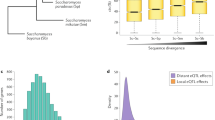Abstract
THERE are two technically distinct branches of experimental biology: physiology and genetics. The first is concerned with the processes by which life is maintained and developed, the second with the determinants of these processes which are identifiable in heredity. The distinction between the two methods of analysis is convenient, but not of course rigorous; experimental embryology attempts to connect them. Across this subdivision cuts the much older one between botany and zoology. However difficult it may be to draw the line between plants and animals, in descriptive work it is clearly necessary to draw a line somewhere. But in experimental analysis it is not merely unnecessary; it is often destructive. This is perhaps not so true in physiology as in genetics, since there is a bifurcation in the method of development of plants and animals and even in the molecular structures used in their development. But this bifurcation begins outside the cell nucleus. Within the nucleus the distinction between plants and animals in structures both molecular and super-molecular to a great extent breaks down. Nuclear division and sexual heredity are the same in principle in the fly and the flowering plant.
This is a preview of subscription content, access via your institution
Access options
Subscribe to this journal
Receive 51 print issues and online access
$199.00 per year
only $3.90 per issue
Buy this article
- Purchase on Springer Link
- Instant access to full article PDF
Prices may be subject to local taxes which are calculated during checkout
Similar content being viewed by others
Author information
Authors and Affiliations
Rights and permissions
About this article
Cite this article
ASHBY, E., CREW, F., DARLINGTON, C. et al. Genetics in the Universities. Nature 138, 972–973 (1936). https://doi.org/10.1038/138972a0
Issue Date:
DOI: https://doi.org/10.1038/138972a0
This article is cited by
-
Teaching Biology
Nature (1963)
Comments
By submitting a comment you agree to abide by our Terms and Community Guidelines. If you find something abusive or that does not comply with our terms or guidelines please flag it as inappropriate.



